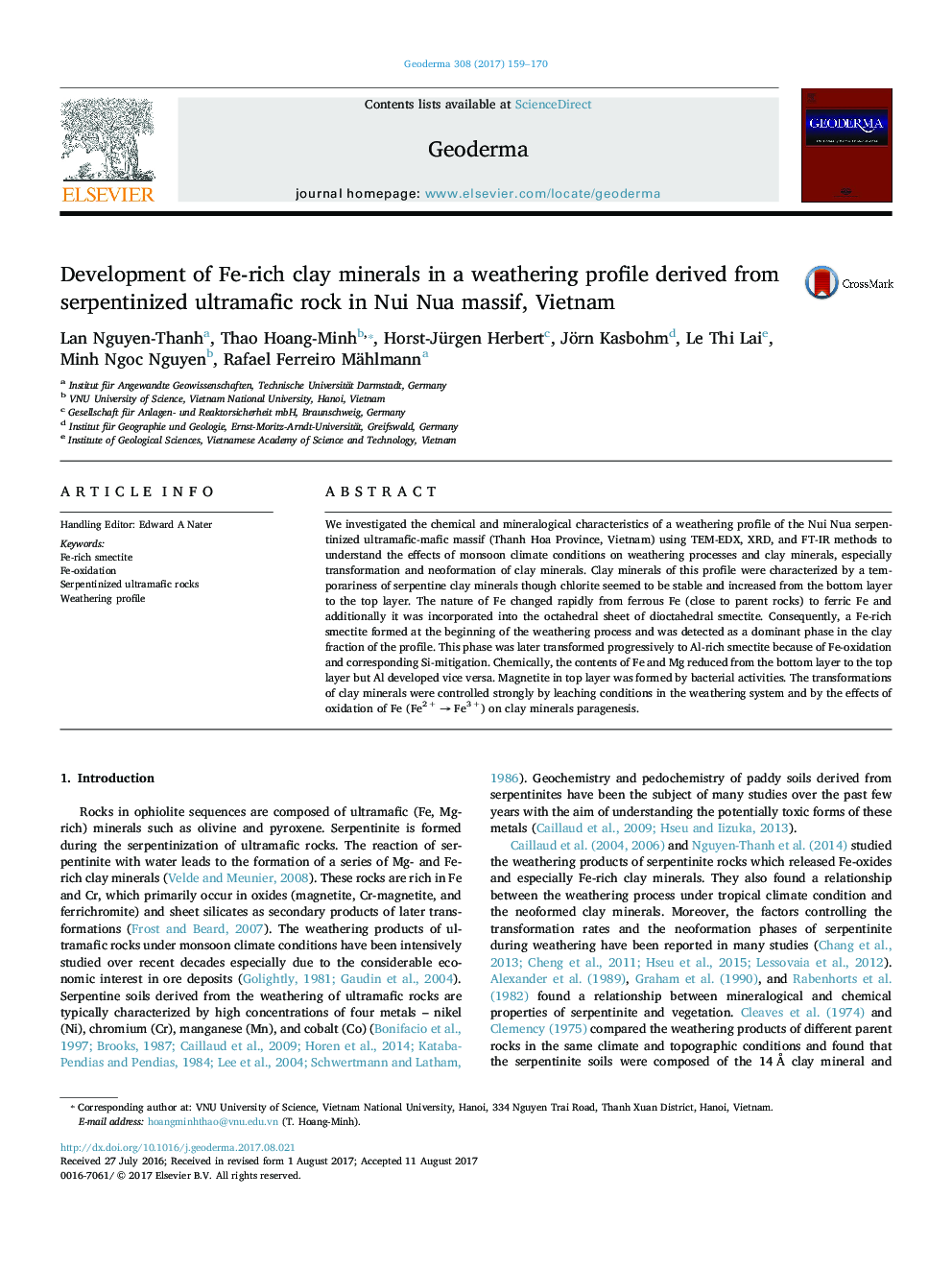| Article ID | Journal | Published Year | Pages | File Type |
|---|---|---|---|---|
| 5770560 | Geoderma | 2017 | 12 Pages |
Abstract
We investigated the chemical and mineralogical characteristics of a weathering profile of the Nui Nua serpentinized ultramafic-mafic massif (Thanh Hoa Province, Vietnam) using TEM-EDX, XRD, and FT-IR methods to understand the effects of monsoon climate conditions on weathering processes and clay minerals, especially transformation and neoformation of clay minerals. Clay minerals of this profile were characterized by a temporariness of serpentine clay minerals though chlorite seemed to be stable and increased from the bottom layer to the top layer. The nature of Fe changed rapidly from ferrous Fe (close to parent rocks) to ferric Fe and additionally it was incorporated into the octahedral sheet of dioctahedral smectite. Consequently, a Fe-rich smectite formed at the beginning of the weathering process and was detected as a dominant phase in the clay fraction of the profile. This phase was later transformed progressively to Al-rich smectite because of Fe-oxidation and corresponding Si-mitigation. Chemically, the contents of Fe and Mg reduced from the bottom layer to the top layer but Al developed vice versa. Magnetite in top layer was formed by bacterial activities. The transformations of clay minerals were controlled strongly by leaching conditions in the weathering system and by the effects of oxidation of Fe (Fe2 + â Fe3 +) on clay minerals paragenesis.
Keywords
Related Topics
Physical Sciences and Engineering
Earth and Planetary Sciences
Earth-Surface Processes
Authors
Lan Nguyen-Thanh, Thao Hoang-Minh, Horst-Jürgen Herbert, Jörn Kasbohm, Le Thi Lai, Minh Ngoc Nguyen, Rafael Ferreiro Mählmann,
